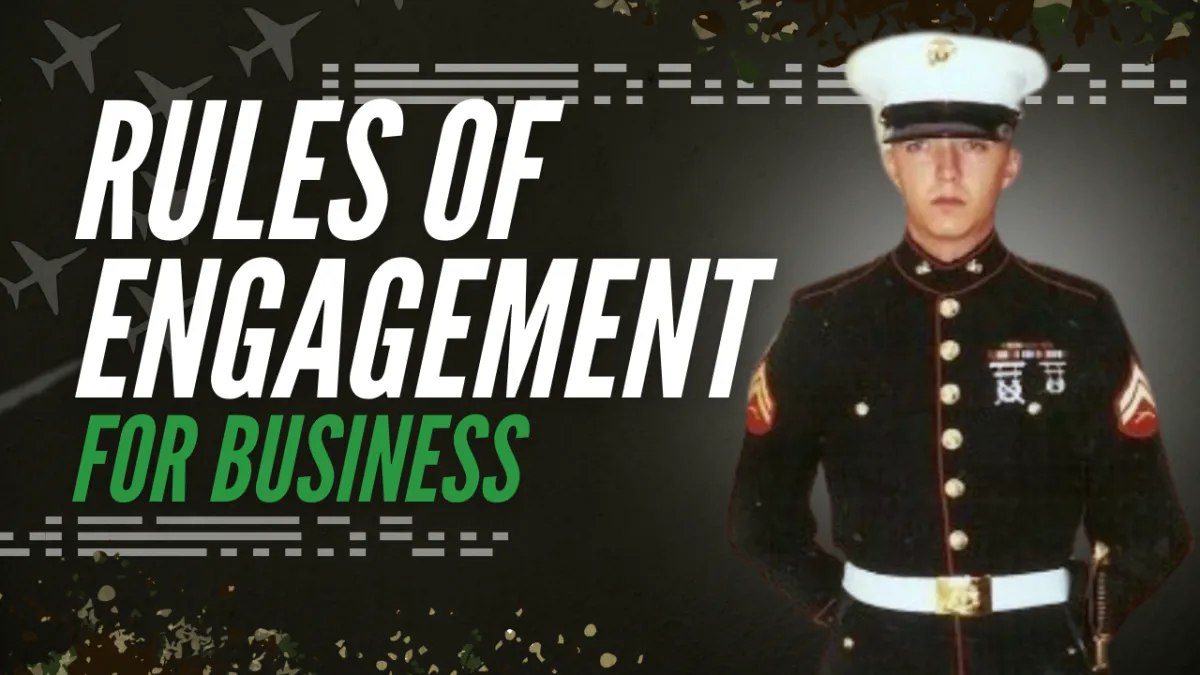
Establishing Rules of Engagement in Your Business
In business, chaos isn’t caused by bad luck—it’s caused by a lack of structure. Imagine going into battle without a strategy or clear orders. That’s exactly how many business owners operate when they skip defining their rules of engagement. In this episode of the Hammer & Grind podcast, we explore how adopting clear guidelines (similar to those used in the military) can transform your team’s communication, improve professionalism, and help your business avoid costly mistakes.
Key Points
1. Importance of Documentation
The host stresses that having documented rules of engagement is crucial for any business. Just as military personnel have specific protocols to follow during missions, businesses should have clear guidelines for employees to adhere to. This includes everything from how to handle customer interactions to safety protocols. Without documentation, expectations can become ambiguous, leading to misunderstandings and potential conflicts.
2. Employee Handbooks and SOPs
Creating an employee handbook is a vital step in outlining the rules of engagement. This handbook should cover various aspects of the business, including payment structures for subcontractors, customer interaction protocols, and attendance policies. The host shares personal experiences where the lack of a handbook led to costly mistakes, highlighting that having everything in writing protects both the employer and the employee.
3. Handling Difficult Situations
The podcast discusses the necessity of having contingency plans for dealing with challenging situations, such as irate customers or employees being propositioned for side work. The host emphasizes that employees should be trained on how to handle these scenarios, as assuming they know how to react can lead to disastrous outcomes. Clear guidelines on how to de-escalate conflicts and maintain professionalism are essential.
4. The Role of Intentionality
Intentionality in business operations is another focal point. The host shares a practical example of how parking logistics can save time and energy on job sites. By outlining specific expectations, such as where to park and how to engage with customers, businesses can streamline operations and enhance efficiency.
5. Addressing Workplace Conduct
The podcast also touches on the importance of setting standards for workplace conduct, including language, appearance, and behavior. Establishing clear policies on what is acceptable can prevent issues related to harassment, inappropriate comments, or unprofessional behavior.
Action Steps
1. Create or Update Your Employee Handbook
If you don’t already have an employee handbook, now is the time to create one. Include sections on company policies, procedures, and expectations. If you have an existing handbook, review it to ensure it covers all necessary areas, such as attendance, conduct, and safety protocols. Consider consulting with an HR professional to ensure compliance with state laws.
2. Train Your Employees
Once your handbook is in place, conduct training sessions to familiarize your employees with the rules of engagement. Make it clear that understanding these guidelines is essential for their success and the success of the business. Regularly revisit these training sessions to reinforce the importance of adhering to the established protocols.
3. Establish a Feedback Loop
Encourage open communication within your team. Create a system where employees can provide feedback on the rules of engagement and suggest improvements. This not only fosters a collaborative environment but also helps identify potential issues before they escalate.
In conclusion, establishing clear rules of engagement is essential for the smooth operation of any business. By documenting policies, training employees, and fostering open communication, you can create a more efficient and harmonious workplace. Remember, profit is not a dirty word, and investing in your business's structure will pay off in the long run.
Resources
Grab Brad's tell-all book: The Contractor Profit Blueprint
